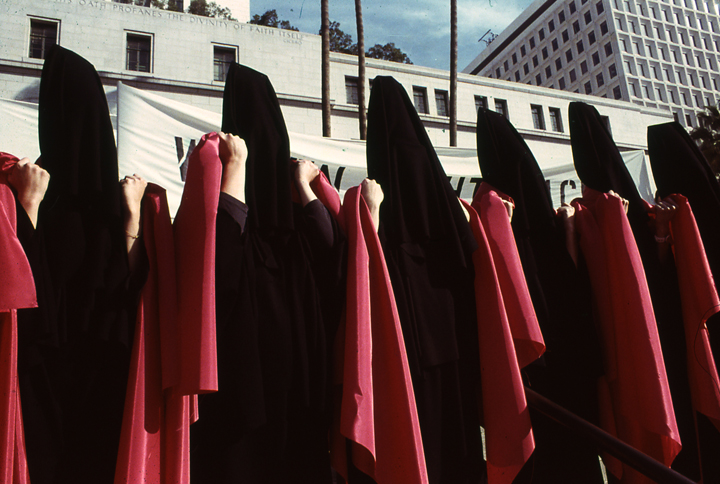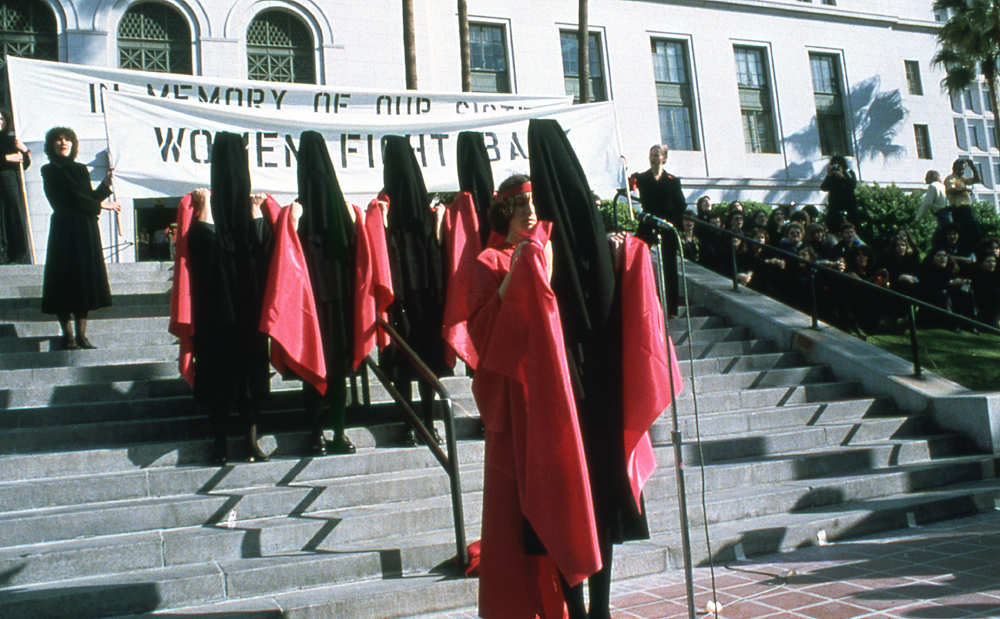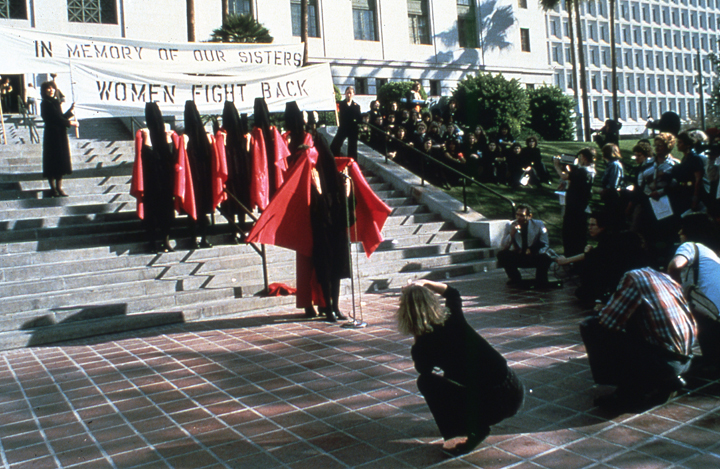In Mourning and In Rage (1977)
Suzanne Lacy and Leslie Labowitz
In December 1977, Los Angeles waited in suspense as each new victim of the “Hillside Strangler” was broadcast on the evening news and in print publications. Soon there were ten women, strangled and dumped on the sides of hillsides, a disposal that characterized each crime, hence named by the news outlets “Hillside Strangler.” Media sensationalized these victims’ lives, contributing to a climate of fear and superstition. In spite of a growing body of literature on the politics of crimes against women, stories focused instead on the randomness and inevitability of the violence, the life circumstances of the women victims, and the personality characteristics of the anonymous murderer. In Mourning and In Rage was a media performance offering an alternative interpretation of the case that included a feminist analysis of violence. Participants from the Woman’s Building, the Rape Hotline Alliance, and the City Council joined with the feminist community and families of the victims in creating a public ritual of rage as well as grief.
A motorcade of sixty women followed a hearse to City Hall, where news media reporters waited. Ten very tall women robed in black like 19th century mourners climbed from the hearse. At the front steps of City Hall, the performers each announced a different form of violence against women, connecting these as part of a fabric of social consent. After each of the ten performers spoke, the women from the motorcade, now surrounding the City Hall steps and forming a Greek chorus, yelled “In memory of our sisters, we fight back!” The tenth woman, clothed in red, stepped forward to represent the capacity for self-defense. City Council members voiced support to the press and the Rape Hotline Alliance pledged to start self-defense classes. Singer-songwriter Holly Near created “Fight Back” the night before and sang it a cappella in the City Plaza. The performance reached its target with extensive coverage on local and statewide news.
Participating artists include Bia Lowe and women from the Woman’s Building. Photographs by Maria Karras.
This project was part of the Ariadne series of works. Los Angeles, California.




